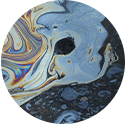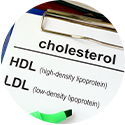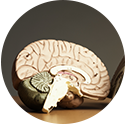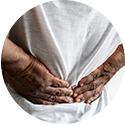Some of the more common problems patients tell us about in their initial consultation are problems with fatigue, “always being tired” and soreness. They describe soreness as “achy, always achy.”
A review of the patient’s medical history shows a long prescription history of cholesterol lowering medications such as: Atorvastatin, Fluvastatin, Lovastatin, Pravastatin, Rosuvastatin calcium, and Simvastatin.
Why are these people tired and achy? Simply, statins disrupt the production of energy.
Over the years statins have come under the scrutiny of researchers for their non-effectiveness in helping patients with cardiovascular disease. Researchers are not only questioning the widespread use of statins as unnecessary and non-effective medicine, but they are also expressing concerns with the side-effect statins may cause. In this article we will focus on two side-effects: muscle pain and fatigue.
At the Magaziner Center for Wellness we have always been critical of the use of statins especially considering the numerous alternative treatments that can be extremely effective and safer.
How are statins harmful? Let’s let the researchers explain for themselves.
Cholesterol is processed in the body through the function of the metabolic mevalonate pathway. Doctors try to disrupt or inhibit this metabolic pathway by targeting a key cholesterol enzyme (3-Hydroxy-3-methylglutaryl-coenzyme A (HMG-CoA) reductase). A November 2019 study (1) from the Sapienza University of Rome questions the use statin medications in targeting the mevalonate pathway because of side-effect concerns.
“Statins are in a wide medical use, yet statins treatment could induce side effects as hepatotoxicity (chemical or medication driven liver damage) and myopathy (muscle wasting and disease) in patients.” Further, the researchers add statins can disrupt the function and process of mitochondrial DNA. What does this mean? Statins cause fatigue.
The researchers noted:
Mitochondrial dysfunction has been described as responsible for several statin side effects and serious adverse reactions; in particular, various mitochondrial phenotypes (adverse reaction) were described such as:
the decrease of respiratory chain function (this is production of the complex energy molecule ATP or adenosine triphosphate. Simply, the spark that creates cellular energy),
the alteration of calcium homeostasis (calcium is involved in the production of ATP in cell migration. It helps get an immune cell to the site of an infection),
and the ROS or reactive oxygen species production (the production of damaging oxidants), alteration of mitochondrial volume.
Simply, statins disrupt the production of energy.
The researchers of this study made another interesting statement, one that is generally accepted in the medical community. “The primary effect of statins remains to be elucidated.” We don’t know how good or how bad they are.
Comparing statin to statin, do some cause more or less muscle pain? Study: No evidence for that.
It has been suggested that some statins would cause less muscle problems than others. A March 2021 paper in the Journal of general internal medicine (2) made a comparison. This is what the researchers documented:
“Statins are effective lipid-lowering drugs for the prevention of cardiovascular disease, but muscular adverse events can limit their use. Hydrophilic statins (pravastatin, rosuvastatin) may cause less muscular events than lipophilic statins (e.g. simvastatin, atorvastatin) due to lower passive diffusion into muscle cells.” The statin users were divided into groups:
New patient group 1: pravastatin 20-40 mg (hydrophilic) vs simvastatin 10-20 mg (lipophilic).
New patient group 2: rosuvastatin 5-40 mg (hydrophilic) vs atorvastatin 10-80 mg (lipophilic)
New patient group 3: simvastatin 40-80 mg vs atorvastatin 10-20 mg.
Following the start of these prescriptions, the researchers waited until the first symptoms of “muscular event (myopathy, myalgia, myositis, rhabdomyolysis) during a maximum follow-up of 1 year.” Each statin had their results recorded and compared against its group counterpart.
Conclusions: (These) results do not suggest a systematically lower risk of muscular events for hydrophilic statins when compared to lipophilic statins at comparable lipid-lowering doses.
Statin Intolerance
An October 2019 study in the journal Advances in Therapy (3), helped identify the poor outcome side-effects of statin drugs.
“Statin intolerance occurs in patients with dyslipidemia treated with statins. Statin-associated symptoms have been reported, but the overall patient experience is poorly understood. No instruments are available to collect this patient experience.”
The researchers in this study are trying to determine an effective questionnaire to help doctors understand the side-effects the statins are causing. In the researcher’s survey of patients on cholesterol lowering medication side-effects they found:
“Symptoms experienced by patients included muscle and non-muscle-related pain and discomfort; other muscle-related symptoms; gastrointestinal, cardiovascular, cold-like, fatigue-related, and sensory and systems symptoms; mood changes; and cognitive and memory problems.
Impacts included limitations on general physical functioning; physical activities; social functioning; emotional impacts; sleep disturbances; decreased productivity; and increased healthcare use.
CONCLUSIONS: Symptoms and impacts described by patients showed a wider range of symptoms and impacts than usually discussed clinically. ”
Statins impact energy in the muscles
This idea that statins cause problems of energy and muscle pain is certainly not a new idea, doctors and scientists have been wrestling with this problem for some time. A 2013 study (4) found that energy and muscle pain problems seen in people taking statins may be centered on the muscle’s inability to produce “muscle energy.”
This was the statement of findings from doctors at the University of Copenhagen who conducted this study:
“. . . statin treatment affects the energy production in muscles. We are working on the assumption that this can be the direct cause of muscle weakness and pain in the patients.”
Statins can cause inflammation in the muscles. What is worse is that the muscle inflammation continued after the patients stopped using the statins.
A May 2020 study (5) offered these observation on muscle inflammation and the use of statins. What is worse is that the muscle inflammation continued after the patients stopped using teh statins. Here is what the paper said:
Statin-induced immune-mediated necrotizing myopathy, (sudden, unexpected, inflammation traced to statin use). . . It is a rare side effect of statins, distinct from the more commonly recognized statin-induced myalgia, that is challenging to diagnose and treat.
The researchers described the case of one patient a 59-year-old male with a prior history of statin intolerance presenting with markedly elevated creatinine kinase, myoglobinuria, and one month of progressive proximal muscle weakness after restarting atorvastatin 10 months prior to admission. High-dose glucocorticoids led to rapid clinical improvement, although the patient relapsed upon tapering. Remission was attained at three months after combination therapy with azathioprine, intravenous immunoglobulin, and a prolonged prednisone taper.
That is a lot of medication to counteract the use of statins.
Alternatives to statins
There is mounting evidence that statins are not nearly as safe or effective as once believed. There is no solid evidence that they substantially improve heart health. Furthermore, statins are known to deplete levels of CoQ10, an enzyme that is essential in protecting the heart. Incidentally, some authorities think that the rise in congestive heart failure in the U.S. may be associated with the increase in statin use and its depletion of CoQ10.
At the Magaziner Center, we believe in balancing cholesterol levels naturally, and that there is no one-size-fits-all treatment for high cholesterol and cardiovascular health. We take the time to look at each patient’s unique biochemistry and specific contributing factors. With our unique and extremely thorough blood and urine testing, we create a plan and course of treatment specific to each patient. Our goal is not to simply lower cholesterol, but to get our patients to optimal cardiovascular health, which results in properly balanced cholesterol levels without relying on dangerous and potentially harmful drugs.
If you would like to explore more information, please contact our office so we can start a conversation with you.
Does Inflammation Cause Breast Cancer? Can Stress Management Stop The Spread?
Reversing Inflammation Can Reverse Sickness Induced Depression
Does Inflammation Cause Breast Cancer? Can Stress Management Stop The Spread?
References
1 Cirigliano A, Amelina A, Biferali B, Macone A, Mozzetta C, Bianchi MM, Mori M, Botta B, Pick E, Negri R, Rinaldi T. Statins interfere with the attachment of S. cerevisiae mtDNA to the inner mitochondrial membrane. J Enzyme Inhib Med Chem. 2020 Dec;35(1):129-137.
2 Mueller AM, Liakoni E, Schneider C, Burkard T, Jick SS, Krähenbühl S, Meier CR, Spoendlin J. The Risk of Muscular Events Among New Users of Hydrophilic and Lipophilic Statins: an Observational Cohort Study. Journal of General Internal Medicine. 2021 Mar 9:1-9.
3 Vrablik M, Catapano AL, Wiklund O, Qian Y, Rane P, Grove A, Martin ML. Understanding the Patient Perception of Statin Experience: A Qualitative Study. Adv Ther. 2019 Oct;36(10):2723-2743. doi: 10.1007/s12325-019-01073-7. Epub 2019 Sep 3. PMID: 31482507; PMCID: PMC6822972.
4. http://news.ku.dk/all_news/2013/2013.1/cholesterol-medicine-affects-energy-production-in-muscles/
5 Stroie OP, Boster J, Surry L. Statin-Induced Immune-Mediated Necrotizing Myopathy: An Increasingly Recognized Inflammatory Myopathy. Cureus. 2020;12(5):e7963. Published 2020 May 5. doi:10.7759/cureus.7963





































Recent Comments